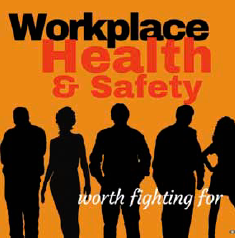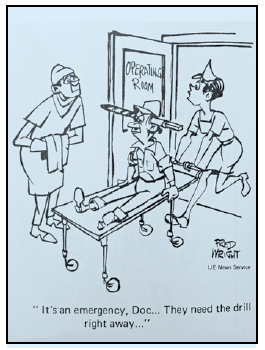‘Stand Up for Safe Jobs’ Campaign a Priority in St. Paul
January 1, 2018
(This article first appeared in the January-February 2018 issue of the American Postal Worker magazine)
Every worker has the right to a safe workplace. Most APWU members know first-hand what can happen if proper safety procedures are not followed by management. The simple truth is: If postal workers want a safe workplace, APWU members have to work together to force management to make changes when necessary. 
The St. Paul Area Local has consistently worked hard to make safety a priority. These workers have the unique opportunity to be a part of not one, but two local committees that work to identify safety issues and propose solutions to reduce injuries – the Joint Labor Management Safety & Health Committee (JLMSHC) and the Ergonomic Risk Reduction Process (ERRP) – at the St. Paul Processing & Distribution Center (P&DC).
“It’s important to get the perspective from people who are actually doing the job,” said St. Paul Area Local President Todd Elkerton.
He explained that in the past, management has attempted to create workplace involvement committees, consisting of management- appointed employees, but the local opposed it.
“We don’t want to get in a trap that management picks who they are,” Elkerton said. “We want to represent members on the committee. It’s our voice.”
Workroom Floor Issues
Committee members work with management to resolve a wide range of issues on the workroom floor.
Jodi France, the Clerk Craft Safety Representative on the JLMSHC said that a big problem at the St. Paul P&DC is untrained workers. “We’ve got a lot of new Postal Support Employees (PSEs) who really need to shadow someone for a week and know the proper way to do these very repetitive jobs,” she said. “That’s where injuries come into play.” The committee then works to make sure members receive the proper training.
After hearing complaints, the JLMSHC helped improve working conditions for deaf and hard of hearing members. France ex- plained that the facility now has a special emergency alert system with lights to alert those members in case of a tornado or other disaster. There are also prominently displayed posters picturing American Sign Language signs for common words and the alphabet.
Anti-fatigue mats are commonly used to help workers who spend a lot of time standing on concrete. Once, when newer and bigger machines arrived at the St. Paul P&DC they totally covered the three-foot wide mats, leaving workers with no protection. St. Paul Area Local Clerk Craft Director Jason Stevens recalled how the ERRP team presented the issue to the plant manager. “We had been pushing them. It took some time, but [the manager] agreed and bought 16 four-foot wide anti-fatigue mats,” Stevens said.
A nother matter of great concern at the P&DC were fires that broke out in the loading dock’s insulation. Elkerton explained that lighting from the tractor trailers parked at the docks were pushed up on the foam padding surrounding the door. Heat from the lights caused small fires. “Over the past six months we worked with management to replace them all – 150 dock doors – and replaced the lighting in the trailers to LEDs so they are much cooler,” he said.
nother matter of great concern at the P&DC were fires that broke out in the loading dock’s insulation. Elkerton explained that lighting from the tractor trailers parked at the docks were pushed up on the foam padding surrounding the door. Heat from the lights caused small fires. “Over the past six months we worked with management to replace them all – 150 dock doors – and replaced the lighting in the trailers to LEDs so they are much cooler,” he said.
Rank-and-File Engagement
These committees, especially the ERRP committee, are also a way for rank-and-file workers to get involved in a union activity and see first-hand one of the largest benefits of having a voice at work. Some committee members are shop stewards, but the majority are rank-and-file employees.
A representative from each craft is on the JLMSHC, as well as a representative from the National Postal Mail Handlers Union and management. JLMSHC members receive completed P.S. Form 1767s (Report of Hazard, Unsafe Condition or Practice form) from shop stewards.
The ERRP committee works a bit differently. This committee focuses on ergonomics – designing or arranging a work station to prevent work-related musculoskeletal disorders (MSD) affecting the muscles, nerves, blood vessels, ligaments and tendons. The Occupational Safety and Health Administration (OSHA) writes that “ergonomics – fitting a job to a person – helps lessen muscle fatigue, increases productivity and reduces the number and severity of work-related MSDs.”
In the committee, a representative from each tour puts up suggestion boxes for employees to submit ergonomic workplace issues. Mike Thompson, an ERRP committee member explained how the committee works to correct issues like not “being properly educated on how to operate equipment safely.”
“I don’t see it as a panacea to solve all issues, but we encourage people to take an active role at work,” Elkerton said of the committees. “I have a good team. It’s not me at all. It’s all the work being done around me. We are here to help and be a resource.”
Getting the Word Out
Committee members also use preventative measures for workplace safety. After APWU National officers launched the Stand Up for Safe Jobs campaign, the local widely distributed flyers and wrote articles focusing on safety in their local union paper, Postmark. They also “discussed the campaign at LM (Labor Management) meetings and with the Safety and Health and the ERRP committees,” said Elkerton.
Flyers with messages such as, “Push, don’t pull,” “It doesn’t hurt to be safe” and “Work safe, work smart,” are posted in facilities. All notes from committee meetings are also on display.
Thompson said, “We try to keep it constantly on people’s minds that safety is first.”
The priority on safety empowers members to report issues to the union, instead of letting them slide. “We tell employees, ‘You are our eyes and ears,’” Elkerton added. “So when things happen, we can communicate.”
Big Benefits
Both committees regularly see the fruits of their labor.
“The best benefit is obviously employees going home uninjured every day,” Stevens said.
Thompson agreed. “Whatever we can to do make the person’s work- day more comfortable and without stressing themselves physically... I find it pretty rewarding,” he said.
Thompson added that safety should be a priority for everyone. “I think safety should be pushed by unions [and] by management,” Thompson stated. “It affects the whole aspect of the job. If you have one less person to do the job and someone works twice as hard, that snowballs.
“Our main goal is to have you go home the same way you came to work,” Thompson concluded.




